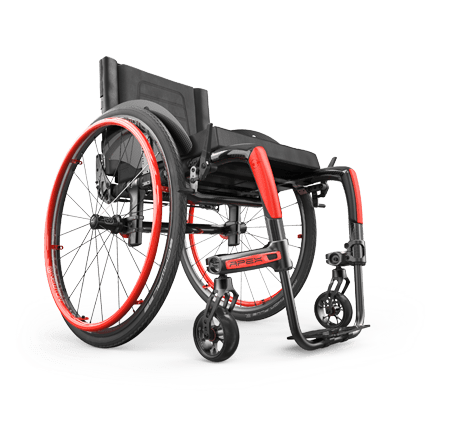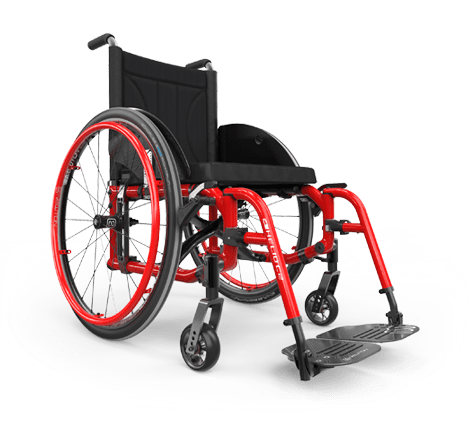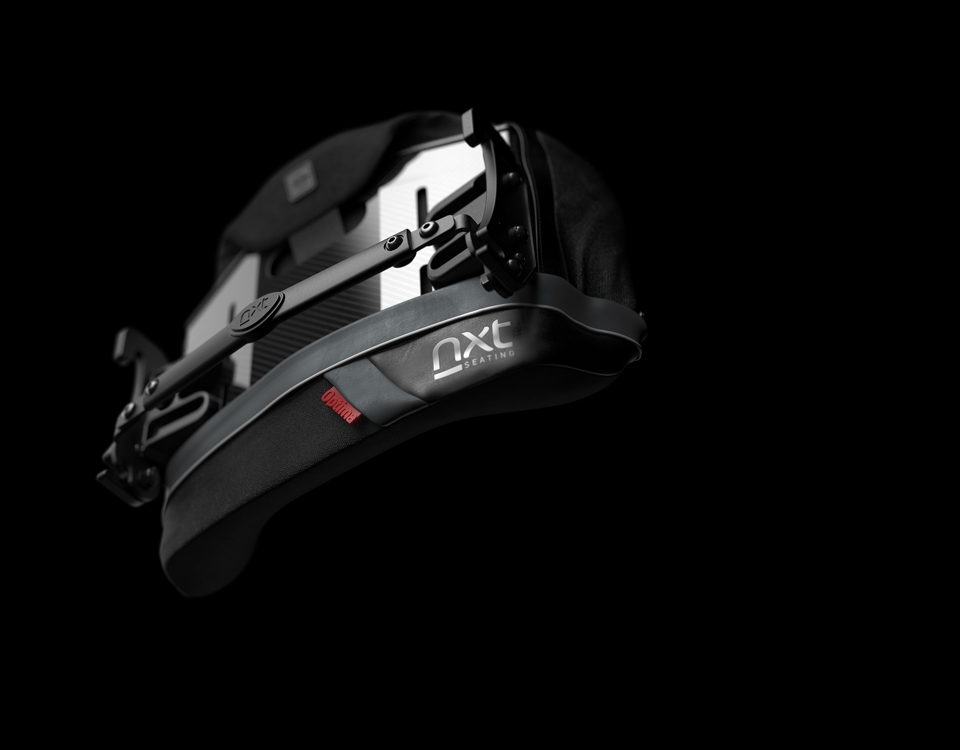What is the goal of your back support?
Whether you are choosing a back support for a new wheelchair, or replacing your current one, considering the overall goals of your back support should be your priority. Is your goal to improve comfort or posture? Do you want a lightweight back support or need specialized hardware for fine-tuning adjustments? Your decision should also take skin protection and pressure management into account. Consider your functional goals. If you are higher functioning, you will want a much lower back support with room for your arms and trunk to rotate, reach, and propel. If you need more trunk support, a taller back support will provide balance. I always go back to the saying, “Proximal stability equals distal ability.” If you support your trunk, your extremities will be able to perform and successfully complete your meaningful activities.
The Many Purposes of a Back Support
Back supports come in different shapes, sizes, and contours to fit the many different needs of wheelchair users. The list below outlines the purpose of solid back supports and can help you narrow down the many options on the market. You can also utilize the keywords to help describe the type of back support you want in your online search.
- Posture Support – for spinal/pelvic asymmetries
- Back supports have differing shapes built in to assist with posture in particular areas of the spine. Working with your healthcare team to identify the postural asymmetries you are trying to accommodate or correct can help narrow this category down. Key Search Words: Lumbar, Pelvic, Modular, Contour, Cut-Outs, Moldable Stays, Adjustable
- Posture Support – for trunk weakness
- Back support length, height (where it is positioned on the back canes), and contour can help assist with trunk weakness by improving your stability in the sitting position so you can increase your mobility and independence with any task. A shorter back support provides less support, while a taller one will increase support. Tip: If you are propelling a wheelchair with your arms, you want to make sure the back support does not obstruct your scapular mobility. Key Search Words: Stability, Adjustable, Contour, Modular, Laterals
- Skin Protection
- Whether you are concerned about your skin because you have absent or diminished sensation or a particular posture increases your risk for skin breakdown, back supports can be semi-customized to avoid increased pressure on those areas. You also want to pay special attention to the material and fabric if skin integrity is a primary concern. Key Search Words: Off-loading, Recessed, Modular, Contour
Properties of the Back Support
Once you have narrowed down the purpose(s) of your back support, there is still a decision to be made! Back supports are made with many different shell materials, support materials, and hardware options. All of this should be taken into consideration with your healthcare team to best match your back support to you!
In our industry, shell material traditionally is aluminum. However, if a high-end, lightweight back support is at the top of your priority list, you can choose a carbon fiber option. There are also varying support materials to choose from, including a variety of foam types, air, or gel. Your decision can sway in a particular direction based on your comfort, cooling properties, or skin protection goals.
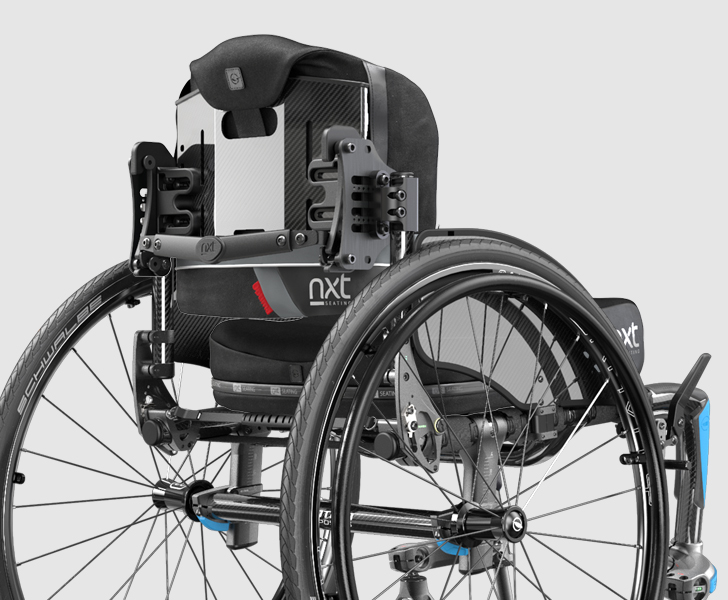
It may surprise you, but you may pick a specific brand of back support based on the hardware alone. Is the hardware easy for you or a caregiver to take on and off? Do your back canes have enough “real estate” for the hardware to fit easily? How much adjustability do you need to be built into the hardware so that you can perfectly fit the seat to back angle or contours of your posture? All of these are important questions to ask and a great reason to trial different options to determine what fits into your lifestyle the best. Try using the following keywords to improve your online search.
Key Search Words: one-hand release, adjustable, accommodate, fixed
Key Anatomy and Landmarks
To ensure you feel confident when selecting your back support, let's review a few landmarks that you will want to know. These will be important to know when selecting your back support, but also when deciding how and where to mount it onto your wheelchair with your provider or therapist.
- Pelvis – (PSIS, posterior superior iliac spine)
- this is a landmark on the back of your pelvis that ideally makes contact with your back support and will help maintain your pelvic positioning throughout the day.
- Shoulder Blades – (scapulae)
- if you are propelling your device with your arms, you will want to make sure your scapulae are free to move in any direction you need during your day. Back support manufacturers may reference “scapular cutouts” or something similar to indicate that the shape of the back support has been designed with anatomical structures in mind.
- Shoulder blades, specifically the inferior angle, are important when measuring your back support length and setting the height of the wheelchair.
- Spinal Curves – (cervical or neck, thoracic or midback, lumber or low back)
- If you and your provider have discussed accommodating or correcting a spinal curve, knowing how the spine is named anatomically can help. For example, lumbar or thoracic support can mean there is extra contouring or “hugging” around that area of the body, and the back support may curve to support those areas.
- Under arms – (axilla)
- This is an important landmark because you will likely select the appropriate width of back support from your left to the right under arm measurement.
Other Back Support Options
A recent study completed by Presperin Pederson et al. (2020) found that posture, function, pain, and satisfaction all improved with solid back supports when compared to upholstery. If selected and fit appropriately, a solid back support can provide many positive outcomes. That said, a solid back support is not your only option. Upholstery backs are what comes standard on manual wheelchairs, requiring the supplier or therapist to select an upgrade option if you want anything other than standard upholstery. Of course, upholstery is an easier material to use with a folding frame wheelchair, but it is typically accompanied by the disadvantage of poor positioning. Over time, upholstery tends to stretch which promotes poor positioning and worsens anatomical postures. Tension adjustable upholstery is an upgraded upholstery selection that is a superior option if a solid back support is not right for you. It can provide mild positioning and comfort when adjusted to your spinal curves.
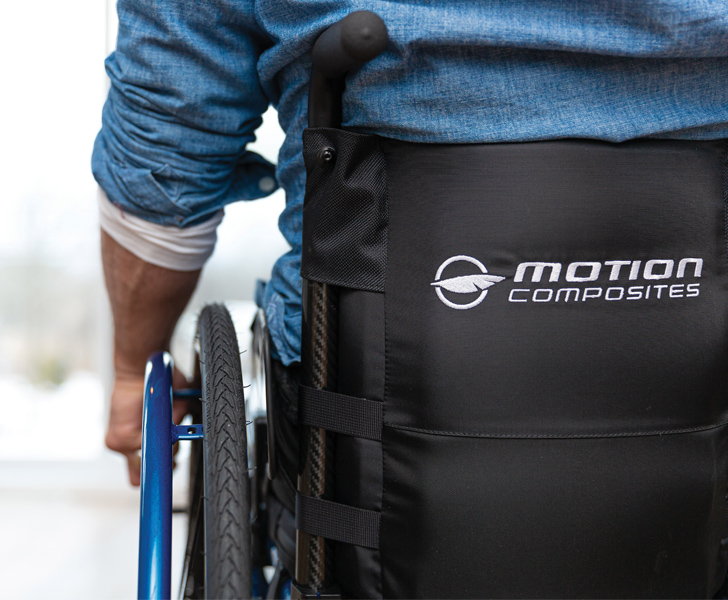
Another back support option is a custom molded back. These can fit into most power, ultralightweight manual, high back (upright) manual, or manual tilt-in-space wheelchair systems. It requires a skilled technician who is trained in performing the fitting and should only be considered when all other off-the-shelf options and additional semi-custom options have been exhausted. The higher price tag and limited adjustability after delivery make a custom molded back support only right for a certain group of individuals.
In the end, if you find yourself overwhelmed with the process of choosing a solid back support, consult with your healthcare team first. Together, you can comb through the options that are on the market. Your overall seating goals will lead you to a few final choices, which you can then trial, helping you make a well-informed decision.




